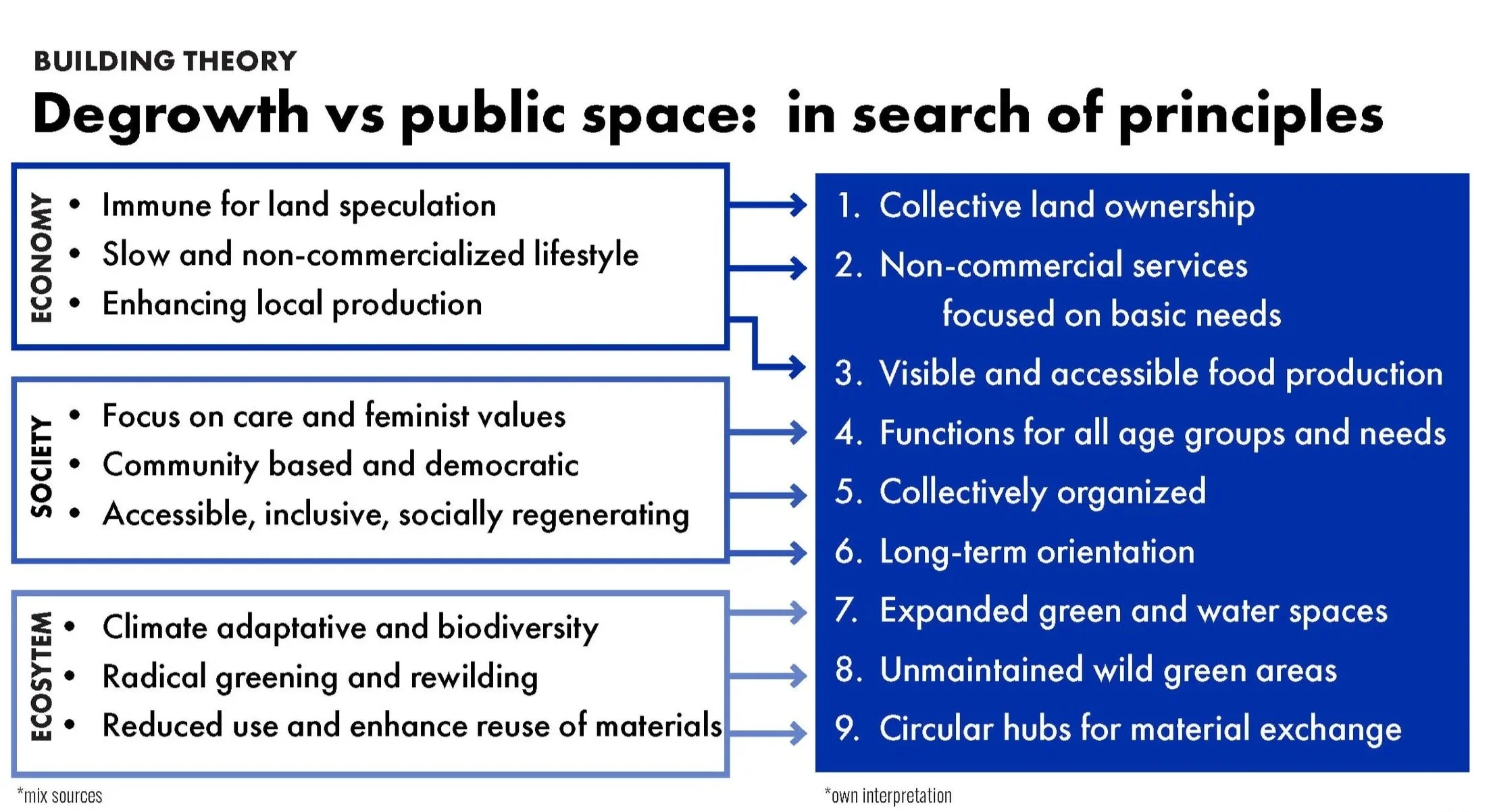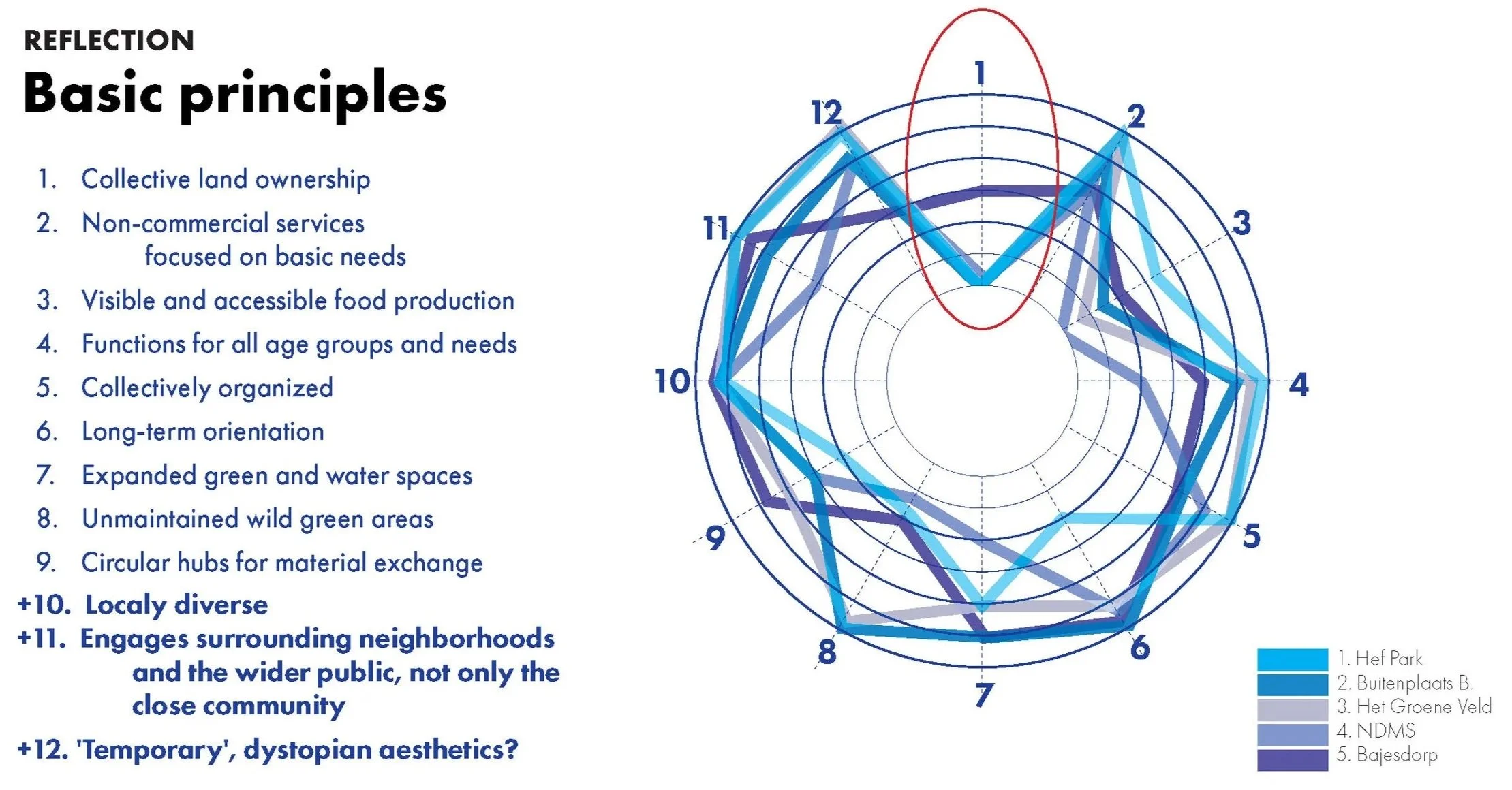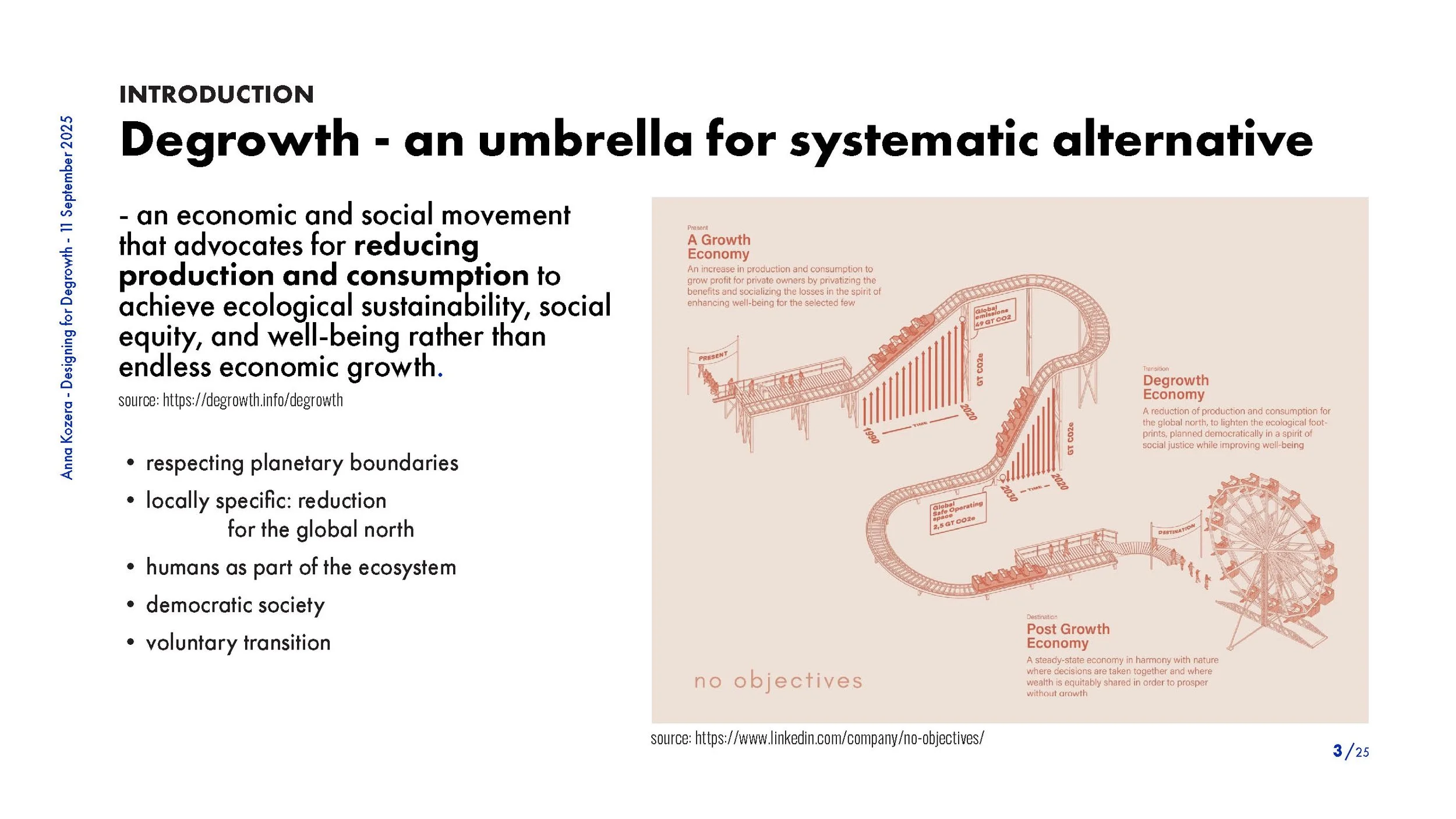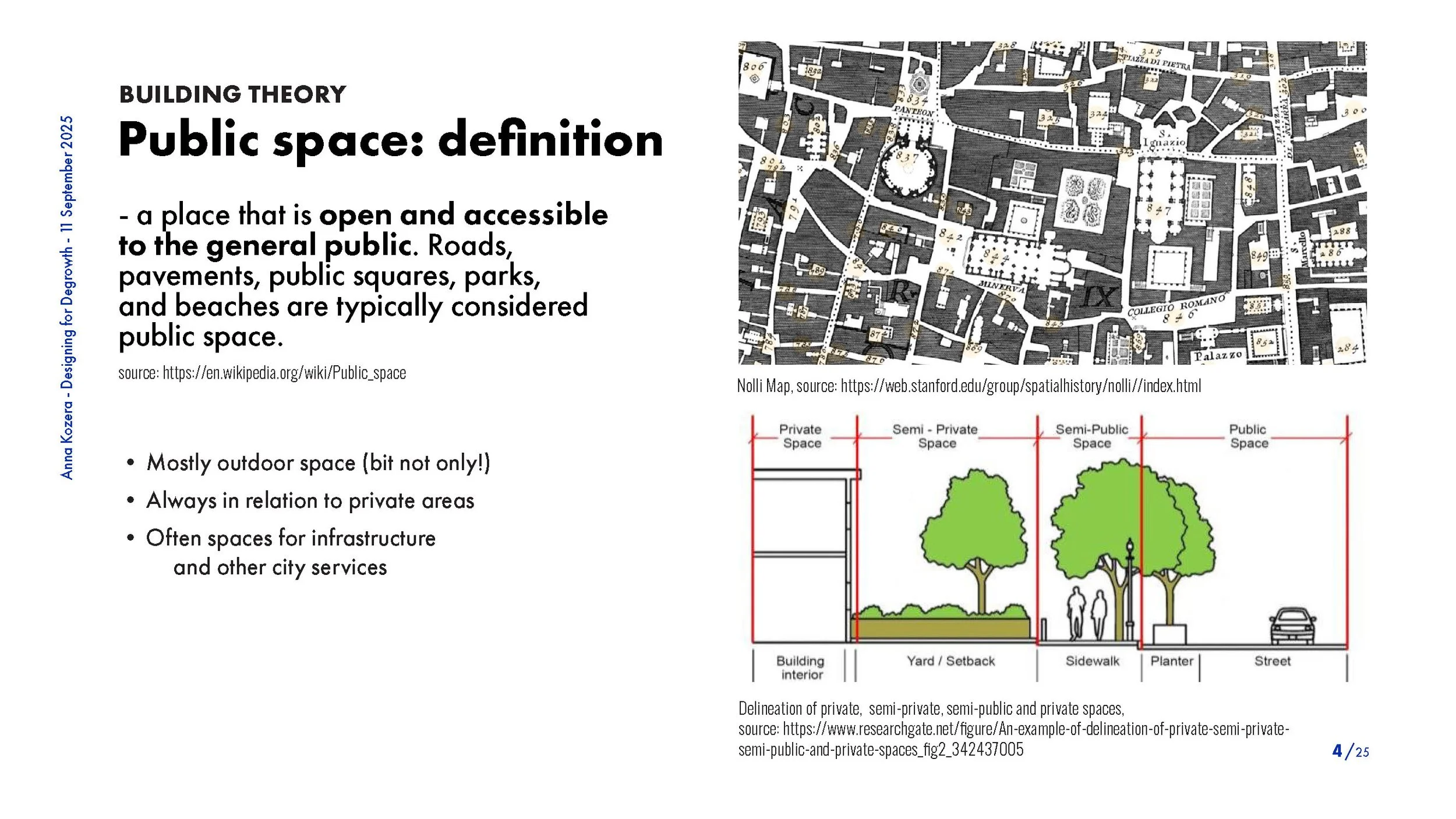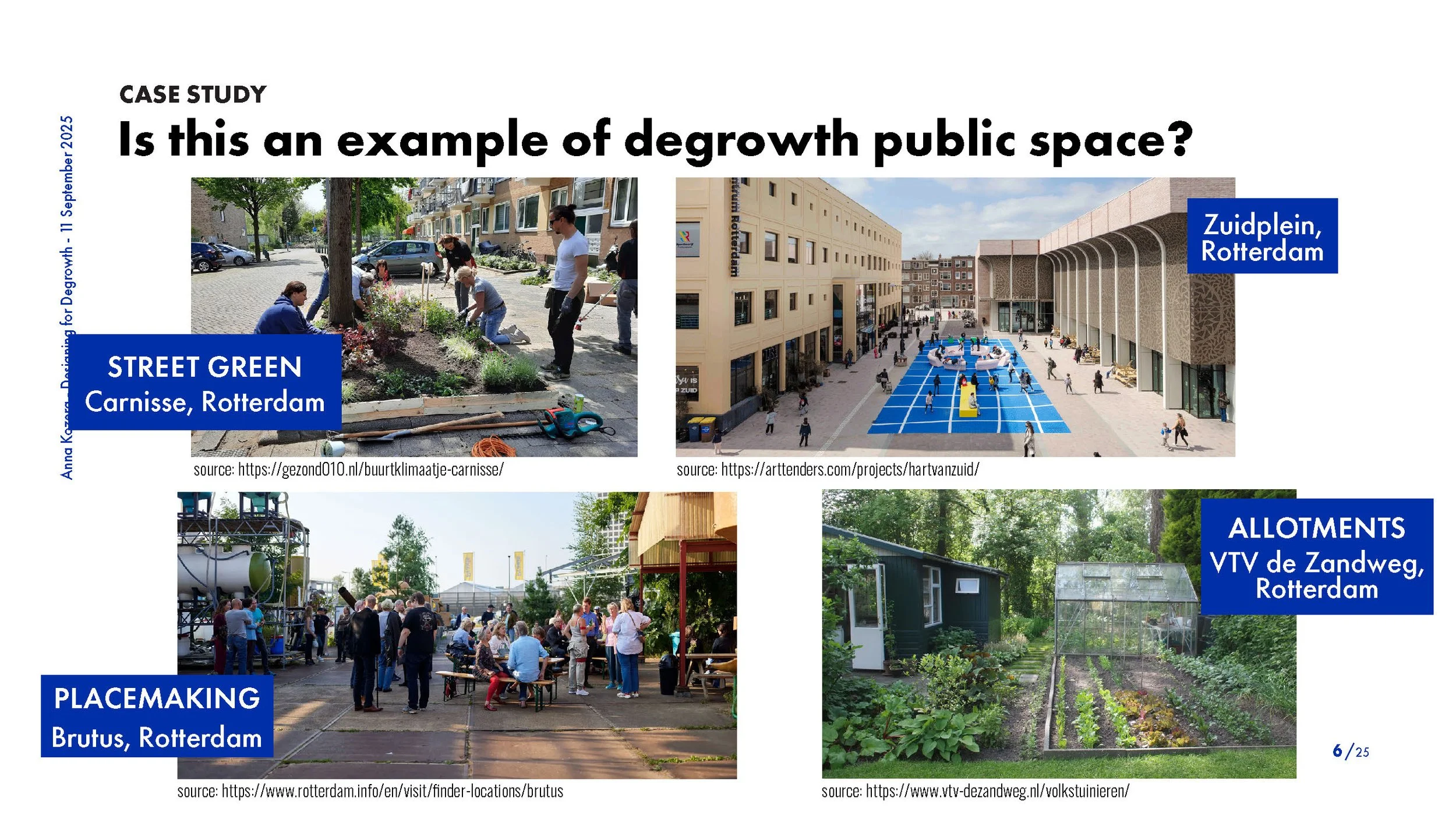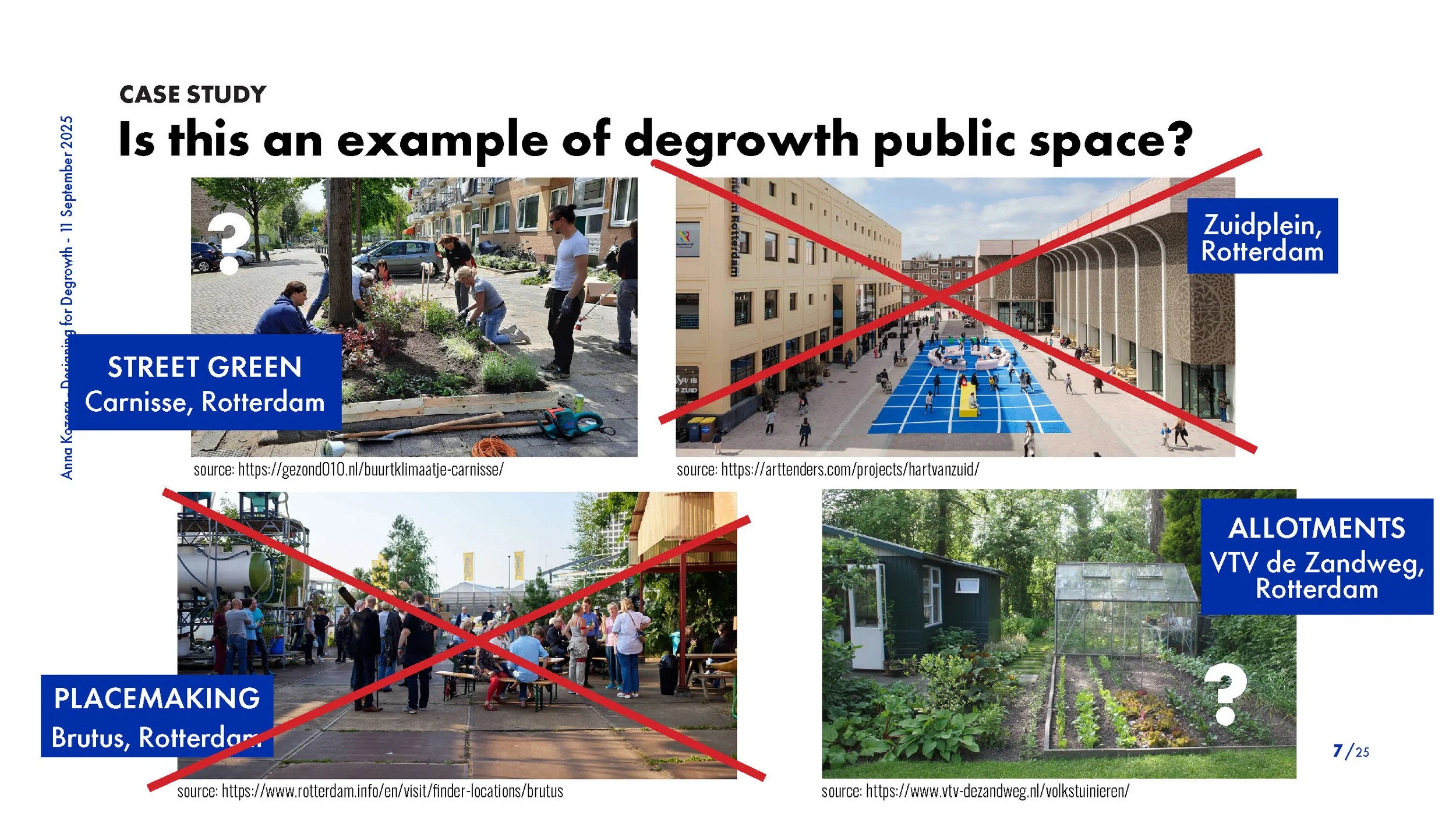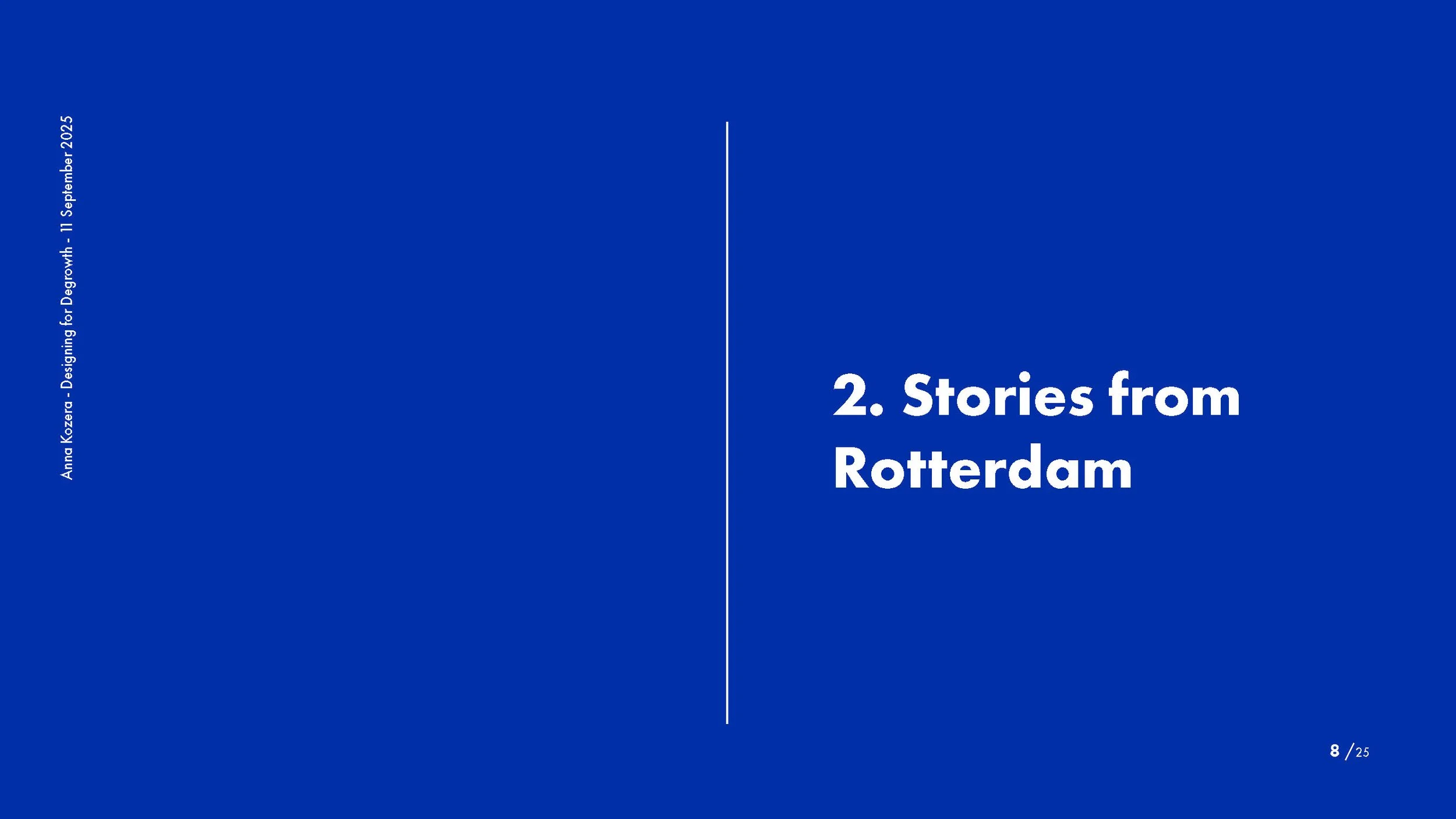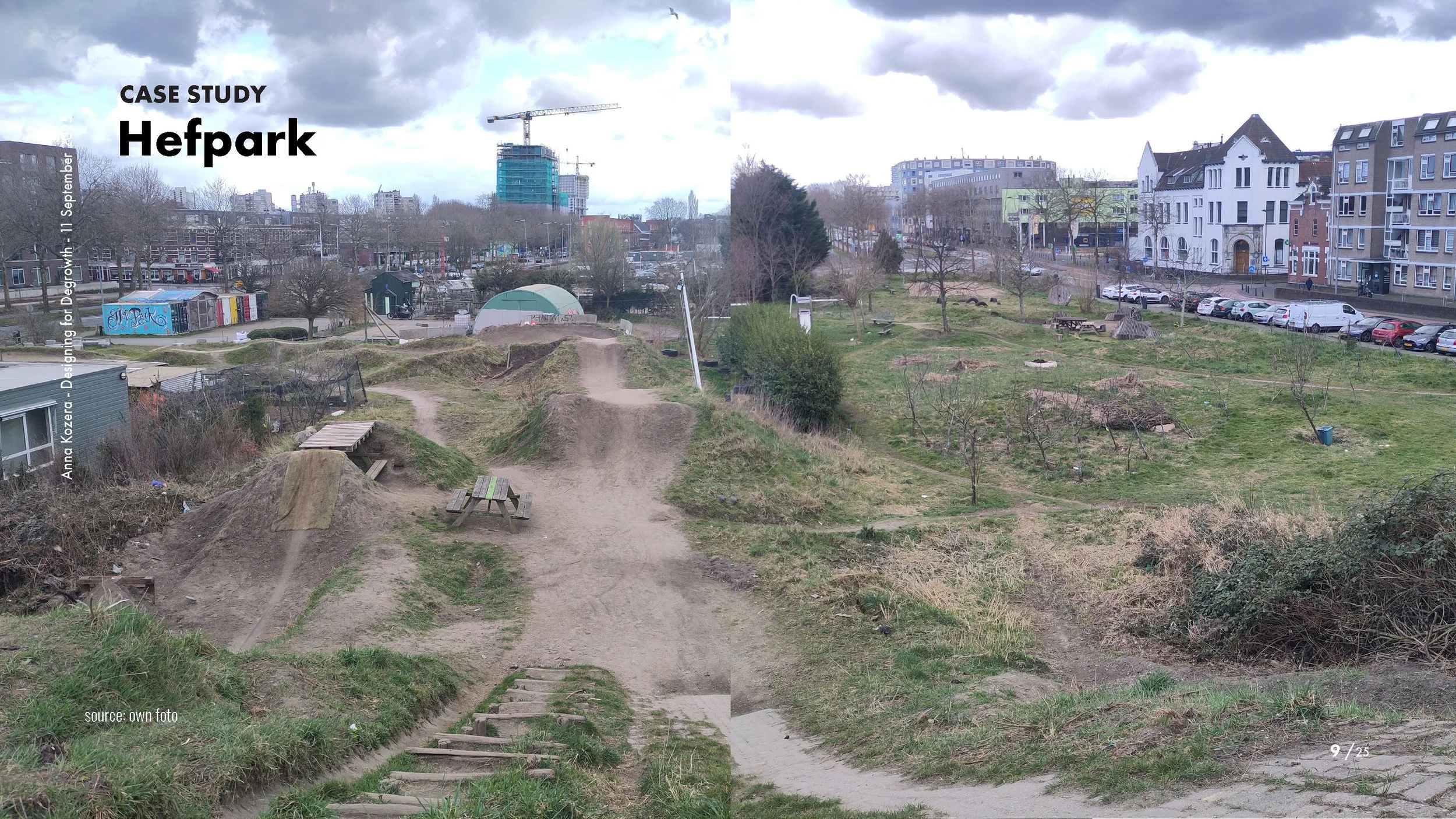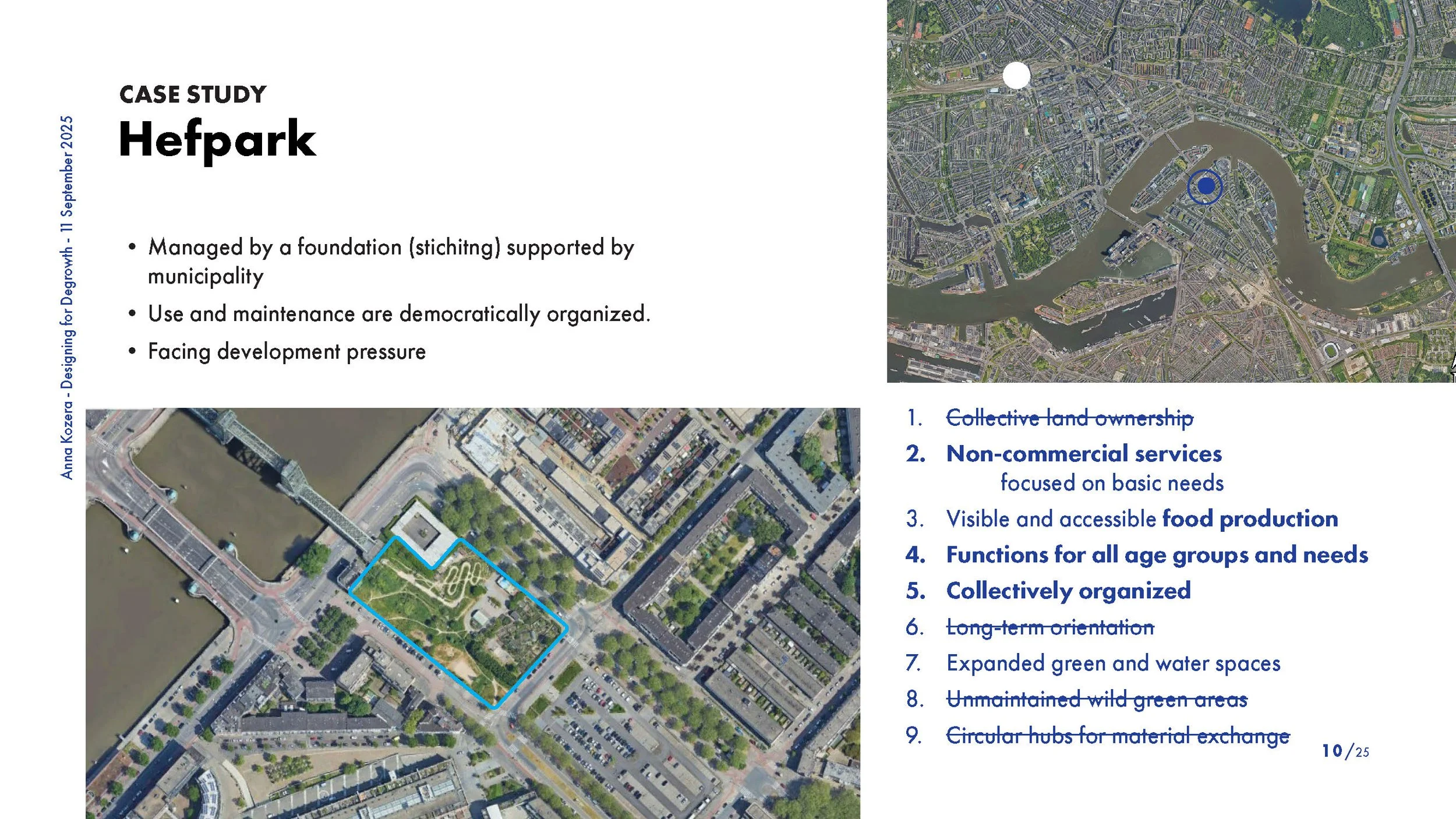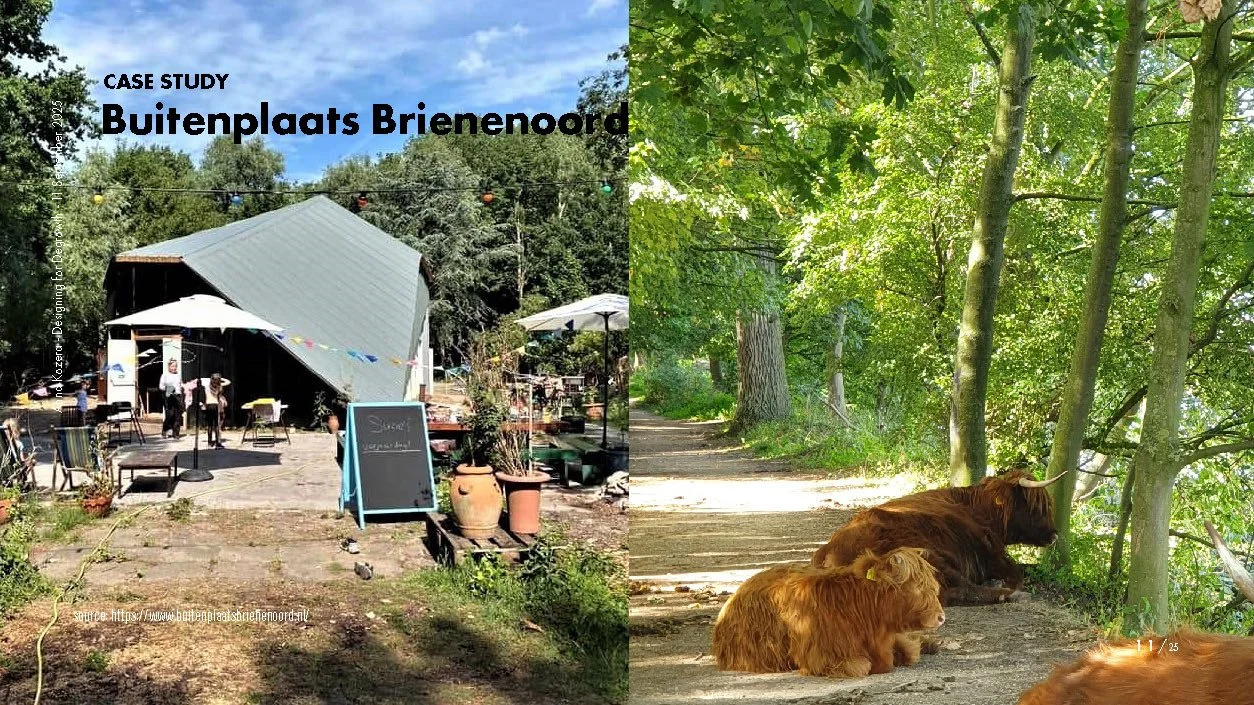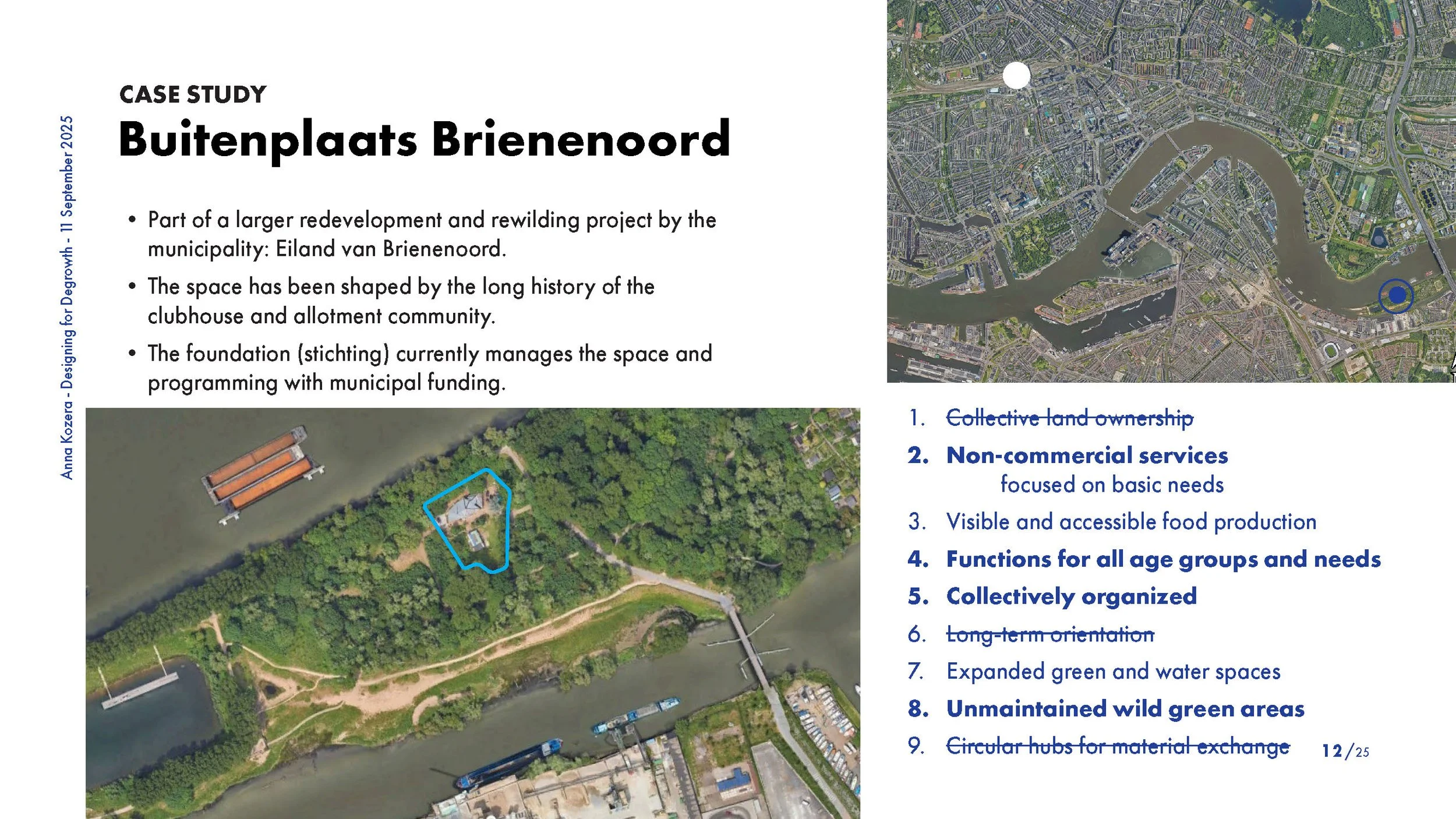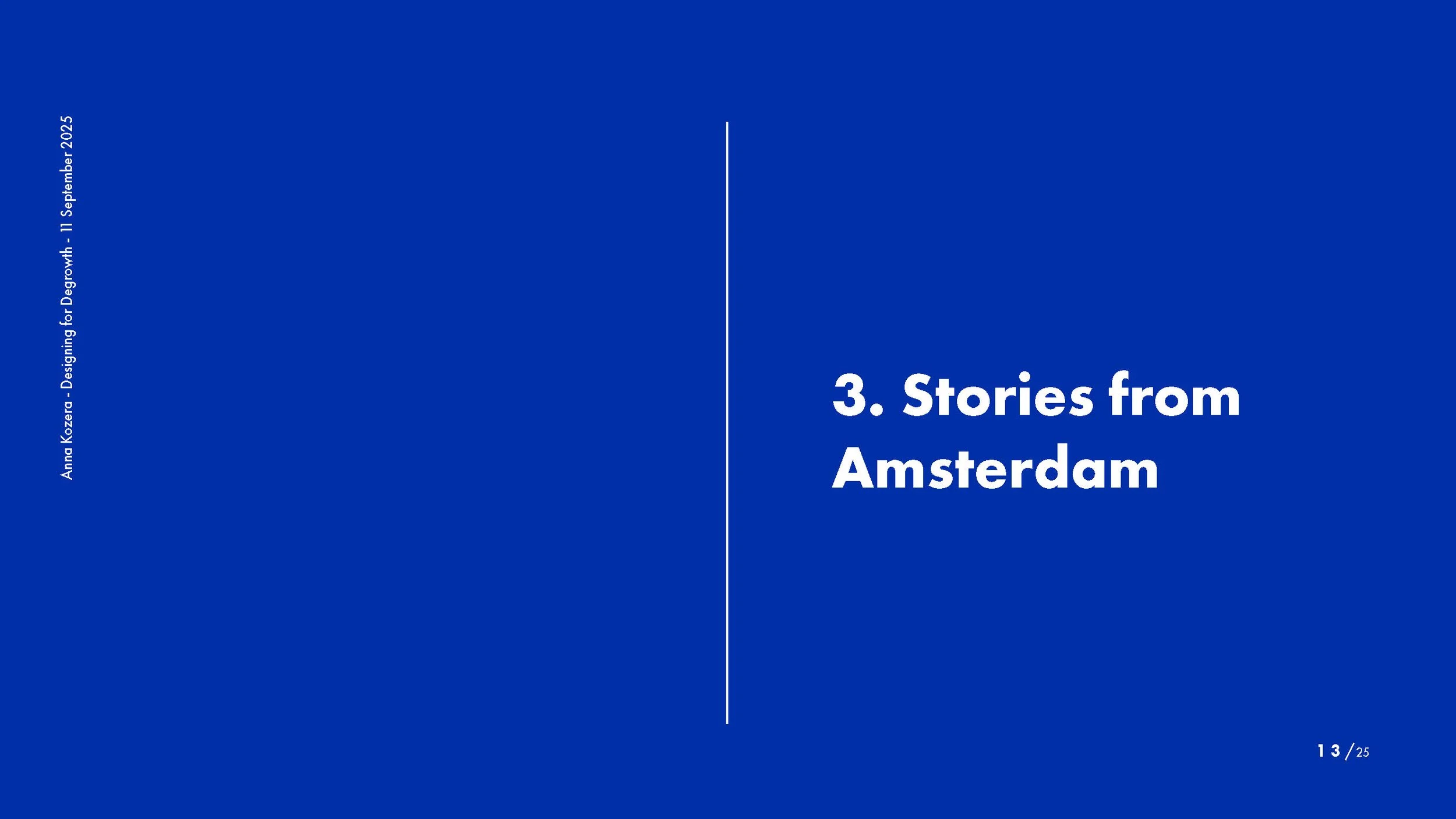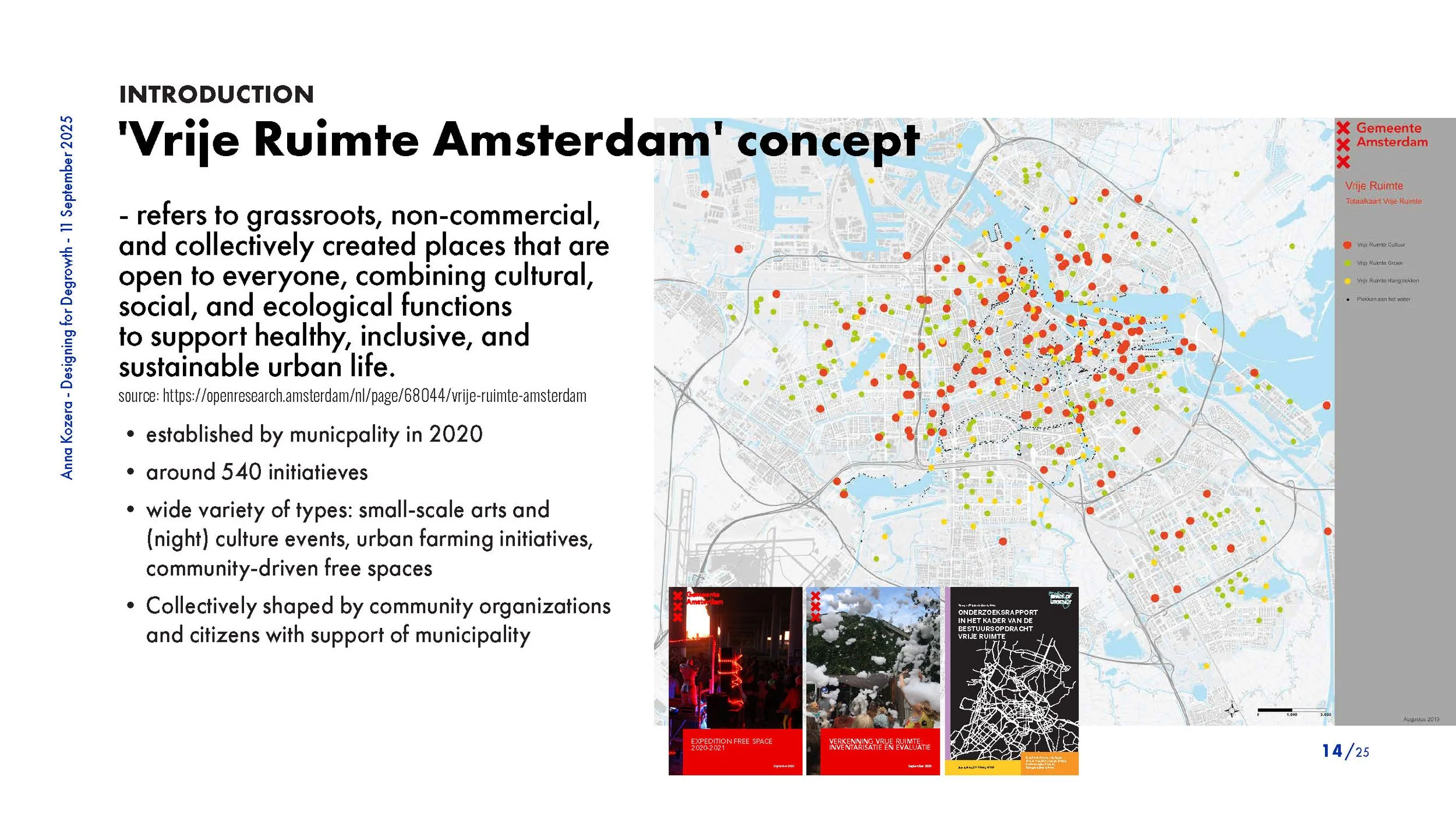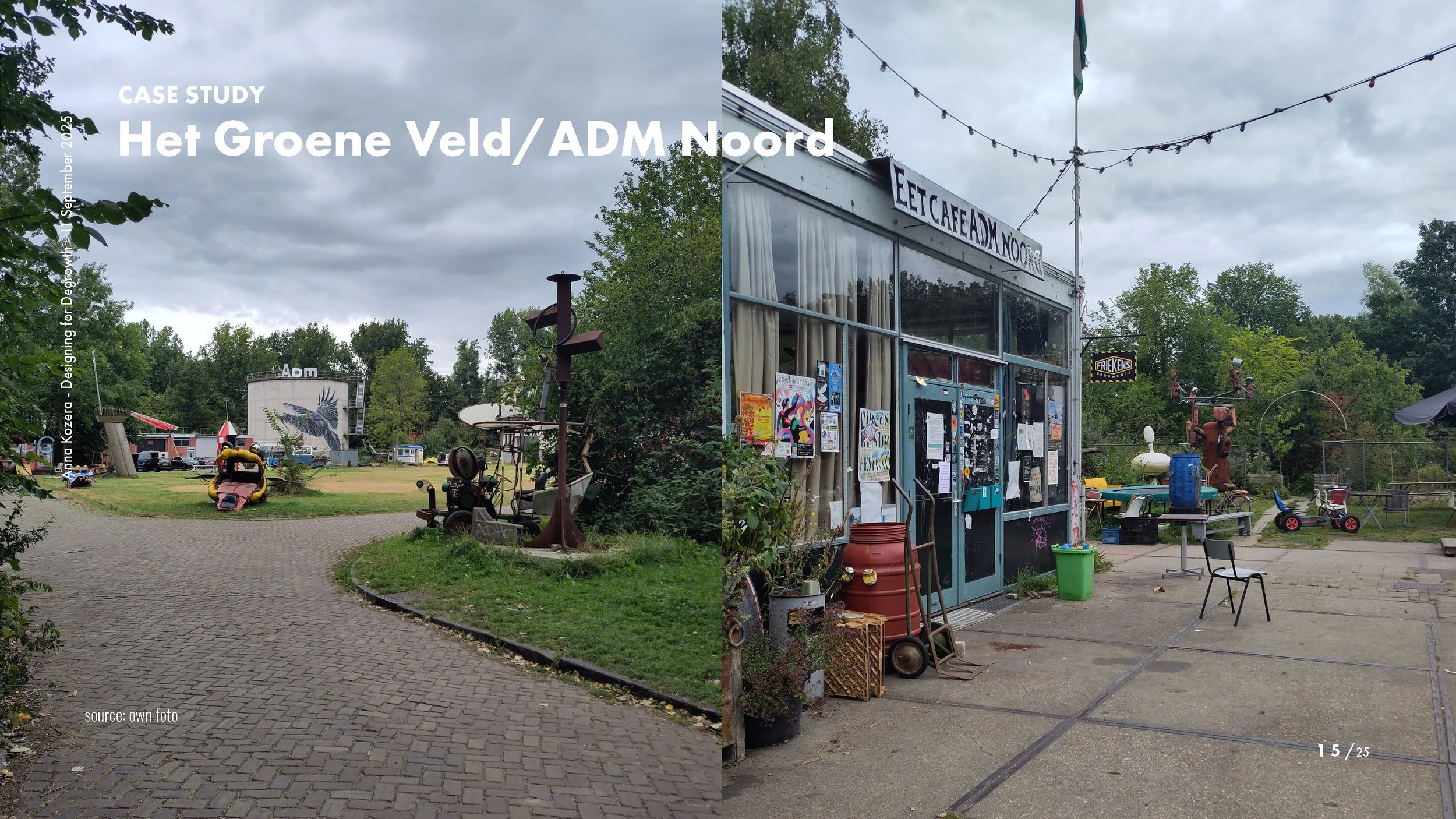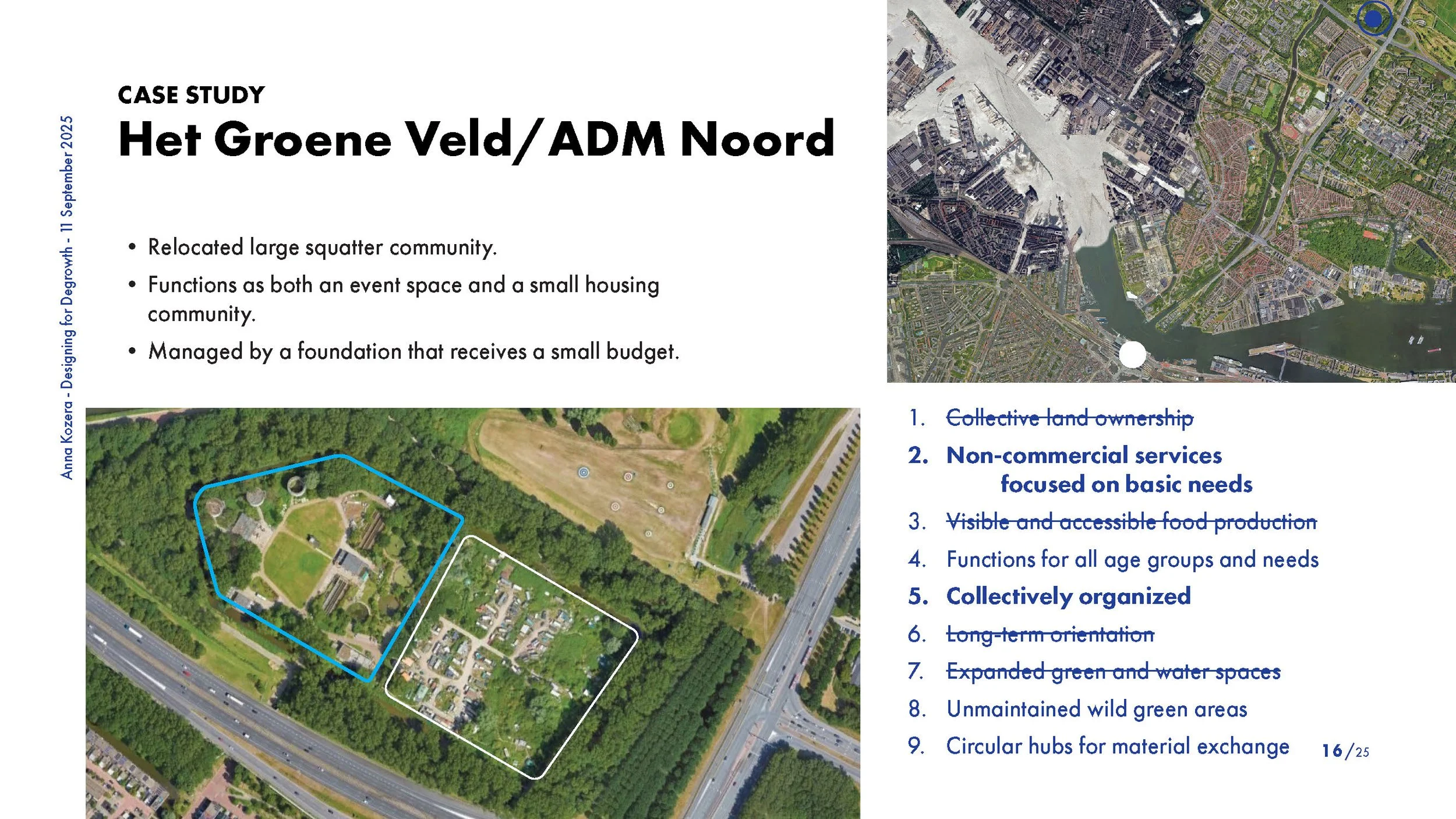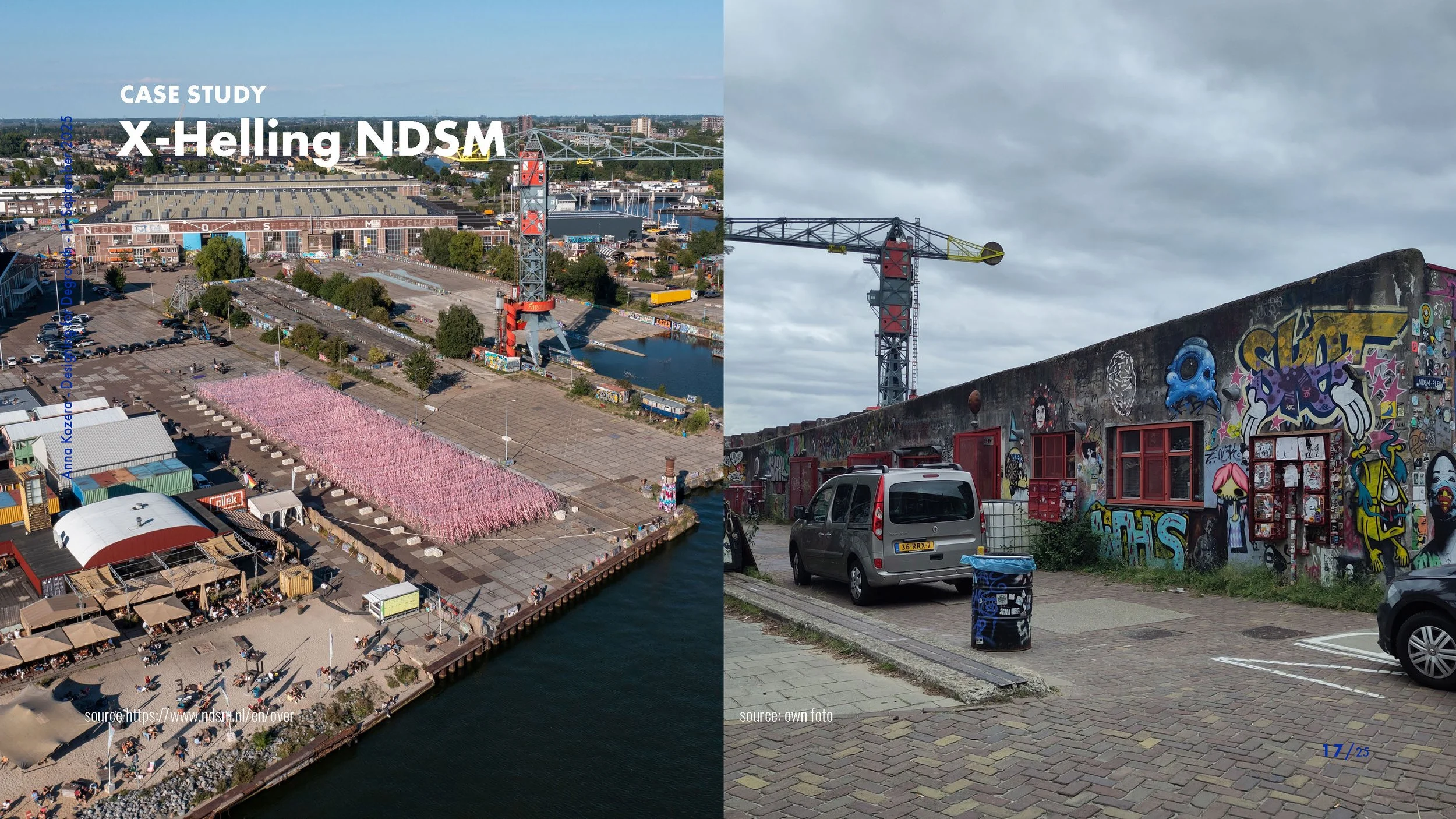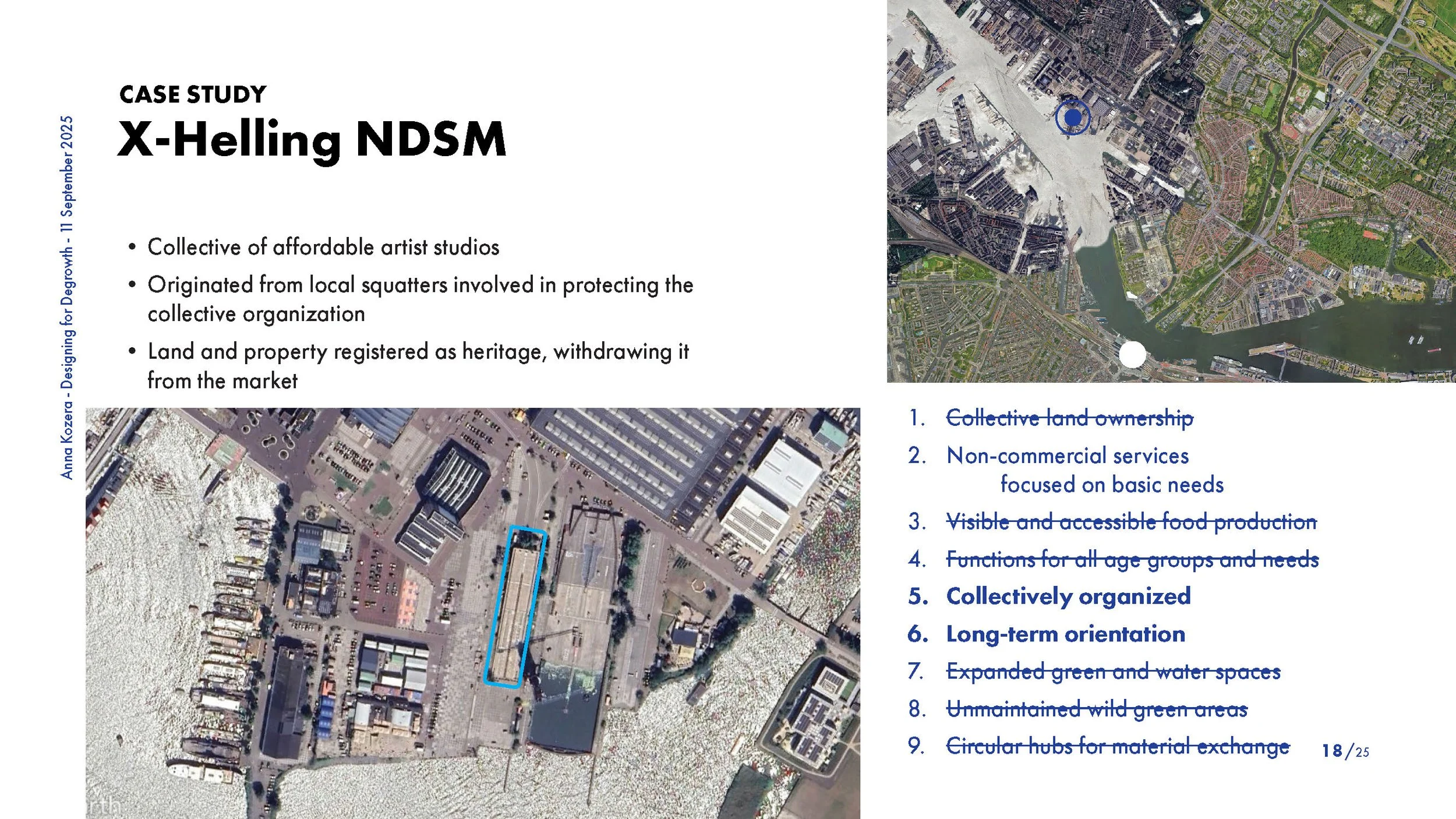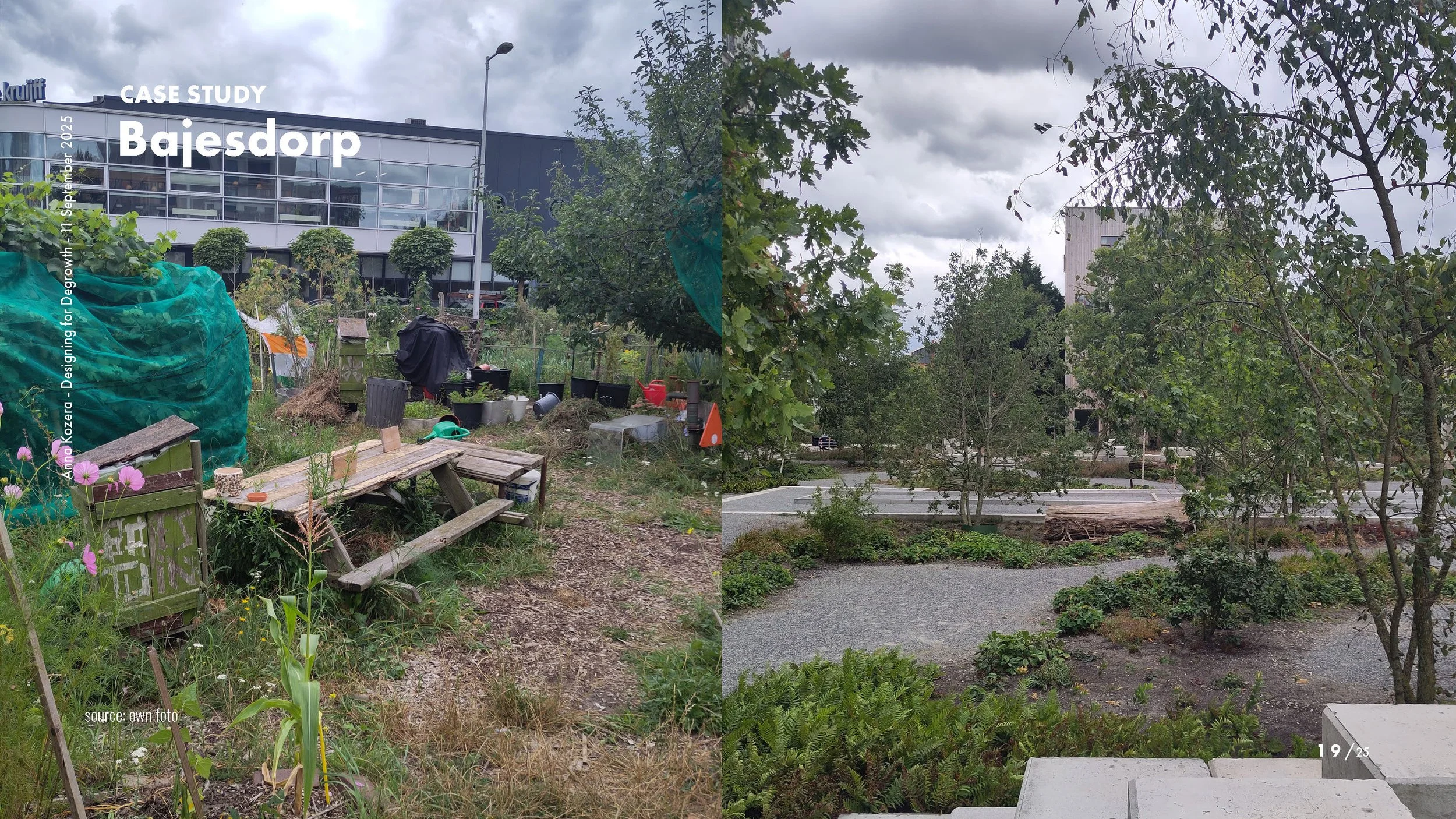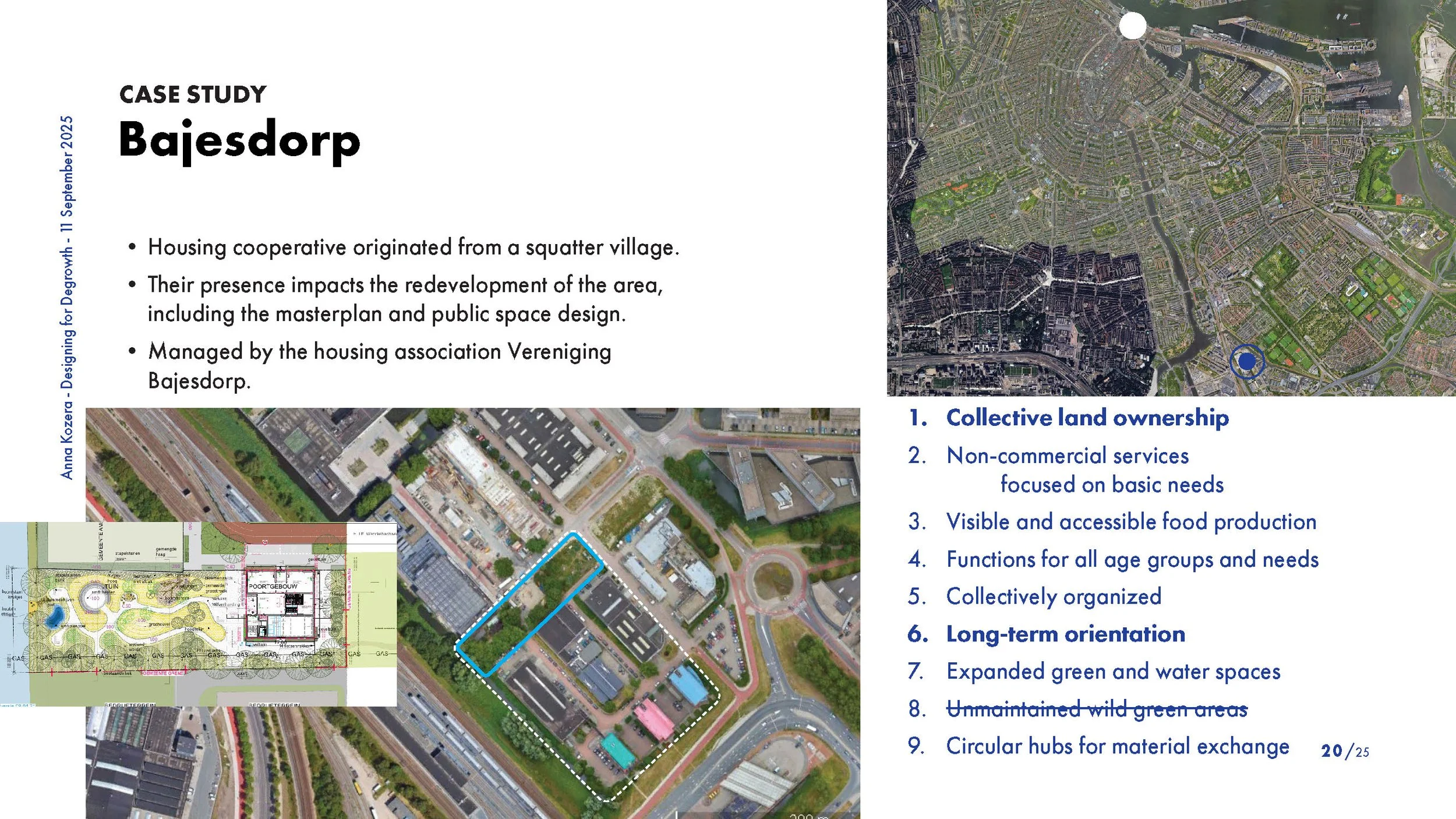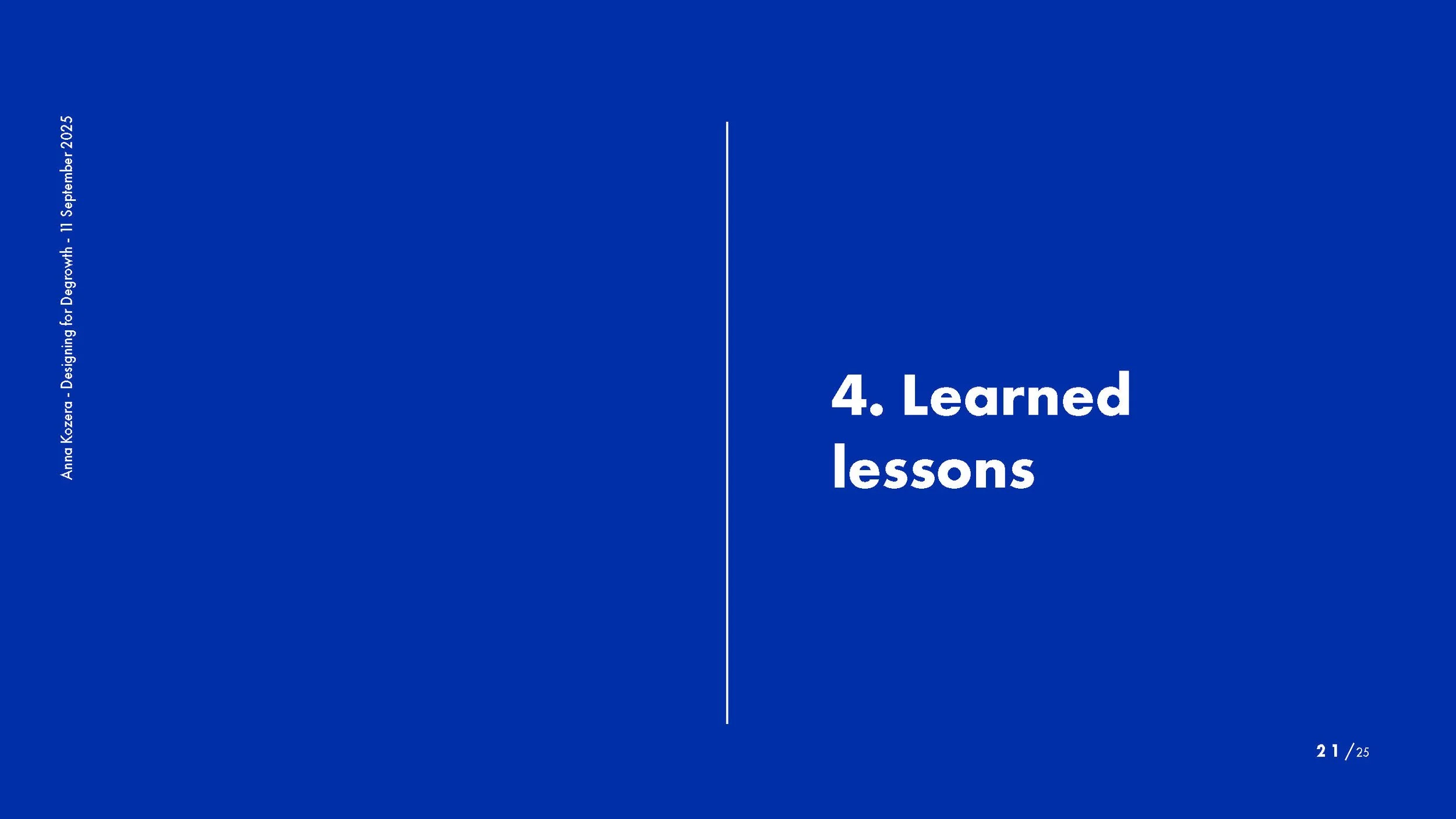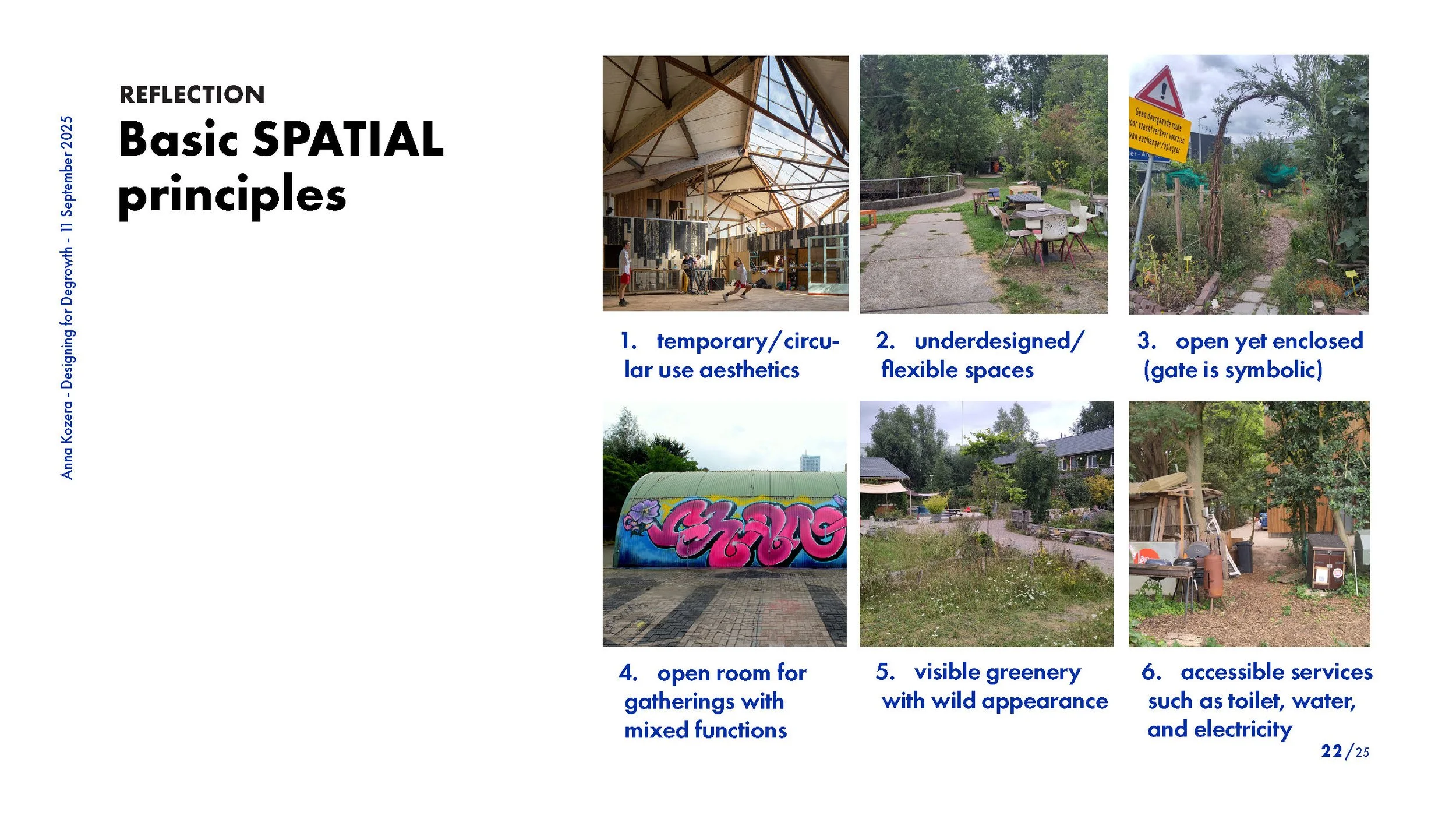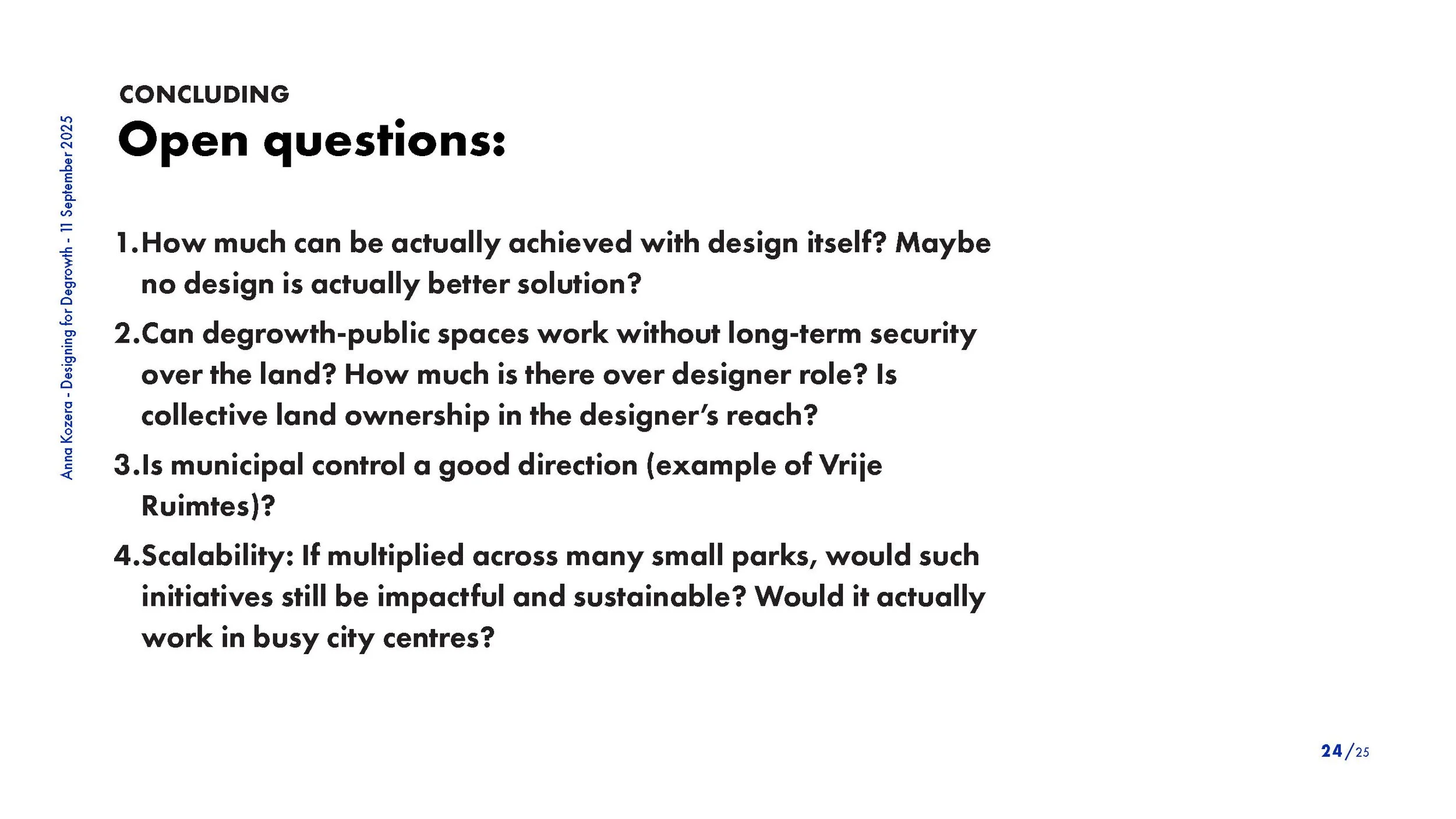Designing for Degrowth: Public Space
Stories from Rotterdam and Amsterdam
personal research| Prefiguring Hopeful Futures Symposium, Eindhoven | September 2025
After long time of personal research into how degrowth movement can be applied into the public space I decided to share my findings with academical public. In this In this case I combined 5 case studies: 3 Vrije Ruimte in Amsterdam and 2 “leftover spaces” in Rotterdam. These examples gave me a foundation to define design and organizational principles for post-growth public spaces—spaces that are green, biodiverse, support non-commercial activities, operate without rigid boundaries, and foster self-governance.
Rather than focusing solely on formal or spatial design, this research emphasizes implementation, governance, and organizational structures, which are central to the success of such initiatives. My analysis draws on personal research, including theoretical frameworks from Designing Disorder (Sentra & Sennett) and Common Space: The City as Commons (Stavrides), as well as interviews conducted over the past year around these case studies.
The project stems from a personal inquiry: Can urban designers create public spaces that align with degrowth values? Beyond this, it serves as indirect research into imagining fully democratic and inclusive public spaces that enhance the quality of urban life. I am particularly interested in the intellectual shifts required of design professionals to participate meaningfully in ecological transitions, rather than perpetuating top-down approaches that prioritize smooth, controlled urban spaces (Smooth City, Boer).

